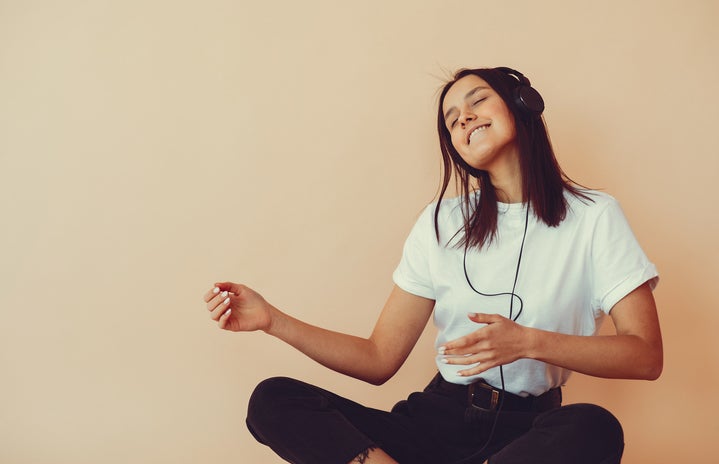It starts off small. You find a main character playlist that you really relate to. You begin to broaden your horizons, explore a little bit of music outside your comfort zone. Then you wonder: “What does it take to make my own playlist?” Soon, you curate an ‘On a Picnic Date with Harry Styles’ playlist. That is how you know you went too far.
Spotify is nothing if not addicting. In 2018, users spent 100 minutes a day on the music streaming platform. But what Spotify seems to master more than any other music app is its playlists. Considering there are two billion of them as of 2018, the streaming platform seems to be doing something right. With its individualized ‘Daily Mix’ feature and its collaborative playlists, where friends can edit a playlist along with you, the streaming platform truly does set itself apart. Still, why is it so entertaining to even make or use a playlist? What does it tell us about ourselves, and how we consume music?
Rachel Edwards, a 20-year-old psychology and political science junior and fan of alternative pop and classical jazz tunes, hopes to answer some of these burning questions.
“Music, I think, is a great outlet,” Edwards said. “It always has been a way for people to boost their mood, to enjoy life, and I think that’s the addicting part. It’s all about boosting the dopamine and boosting what makes you feel good. Music is another form that does that.”
Still, there is a creative aspect that comes with playlist building too, Edwards explains. The opportunities are endless when it comes to the kind of song collections you want to make.
“For some people, creating a playlist is like chasing down a story that’s hidden throughout different songs,” Meg Tarquinio, Spotify’s head of curation strategy, told the New York Times. “It can feel like following clues that no one else heard the way you did.”
Plus, Spotify playlists have become integrated into popular culture.
“The POV playlists make fun of the trendy, highly curated POV lists that go viral on TikTok, like “pov: you’re the main character” or “pov ur the hot ex.” Both playlists have over 30,000 likes on Spotify,” Elena Cavender wrote for Mashable.
This kind of creativity is a large part of why we always turn back to playlists.
“It’s not just that being in a good mood can boost our creativity, but it can work in the reverse direction,” Wilma Koutstaal, a professor at the University of Minnesota, wrote for Psychology Today. “Being creative can itself boost good feelings.”
Besides generating that happy, satisfied feeling, music lovers can connect emotionally with what they stream.
“Other theories say that openness to experiences and ideas, which is one of five big personality traits, are also attributed to connecting with music more on an emotional level,” Edwards shared. Edwards even speculates that playlist making is such a common activity today because of generational attributes.
“As our lives change, our interests change. In this space of early 20s, teenage years, we’re more focused on refining our purpose in life,” Edwards said. “We’re exploring new things. We’re finding out how we fit into the world.”


